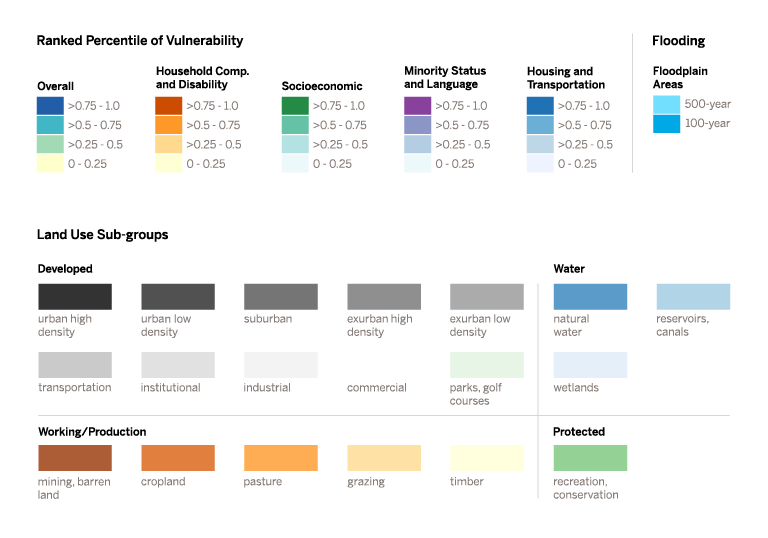What is the level of disruption to normal community function?
Use the list of questions below to assess the extent to which residents and resources could be impacted. To address the questions in this section, it can be helpful to assemble a team of internal and external experts based on the services provided in the community. The members of this team will depend on the specific impacts that are likely to occur within your jurisdiction; the government operations, infrastructure, and policies that will be addressed; the diversity of individuals that live in your community; and how the local government intends to interact with stakeholders and other entities in the region. One piece of guidance is to include at least one representative from every department likely to be affected by climate change (Climate Impacts Group et al., 2007). An example list of needed expertise could include community services, ecological systems, meteorology or climate science, planning and zoning, public health, stormwater management, transportation, wastewater treatment, and water supply.
The questions below offer some topics for conversation, but do not address absolutely all possible impacts a community could experience based on the characteristics of its residents, location, and structure of its community. These questions were developed based on best practices listed in Climate Impacts Group et al., Preparing for Climate Change: A Guidebook for Local, Regional, and State Governments; Boswell et al., Climate Action Planning; and from the expertise at the Environmental Resilience Institute.
- What neighborhoods are located in the census tracts that contain a high proportion of immunocompromised residents and/or a high proportion of homes without air conditioning? Which of those neighborhoods do not have adequate resources to support residents’ needs during extreme heat events?
- Which populations are disproportionately vulnerable to flooding impacts? Think about the proximity of these residents to the floodplain, their ability to evacuate, and their ability to make changes to protect their homes. What other needs do these residents have that would exacerbate the devastation?
- What are the maximum temperature specifications for the materials used to build roads and bridges in your community? Which roads and bridges are most likely to be impacted by the stress of higher temperatures and more freeze-thaw events? What would happen as a result of this stress?
- Consider the structural integrity of critical infrastructure, such as energy plants, hospitals, and schools, among others. How much flooding could they withstand? Were “impact thresholds” identified when this infrastructure was designed? How would those impact thresholds hold up to anticipated temperature and precipitation increases?
- What size rain event is the majority of your stormwater drainage able to accommodate? Will that be sufficient for the size of anticipated rain events?
- What policies exist to help protect undeveloped land in the floodplain and land that is near the floodplain? What policies exist that help protect land that helps manage flood water?
- Is the electric grid prepared for changes in supply and demand?
- Is the water delivery system ready for changes in supply and demand?
- Think about the systems and services members of your community rely on regularly. Are there systems that are already stressed that might have a hard time responding under extreme circumstances?
- Are there plants and animal species that are threatened or endangered within your jurisdiction?
- Are there other impacts that haven’t been considered?



